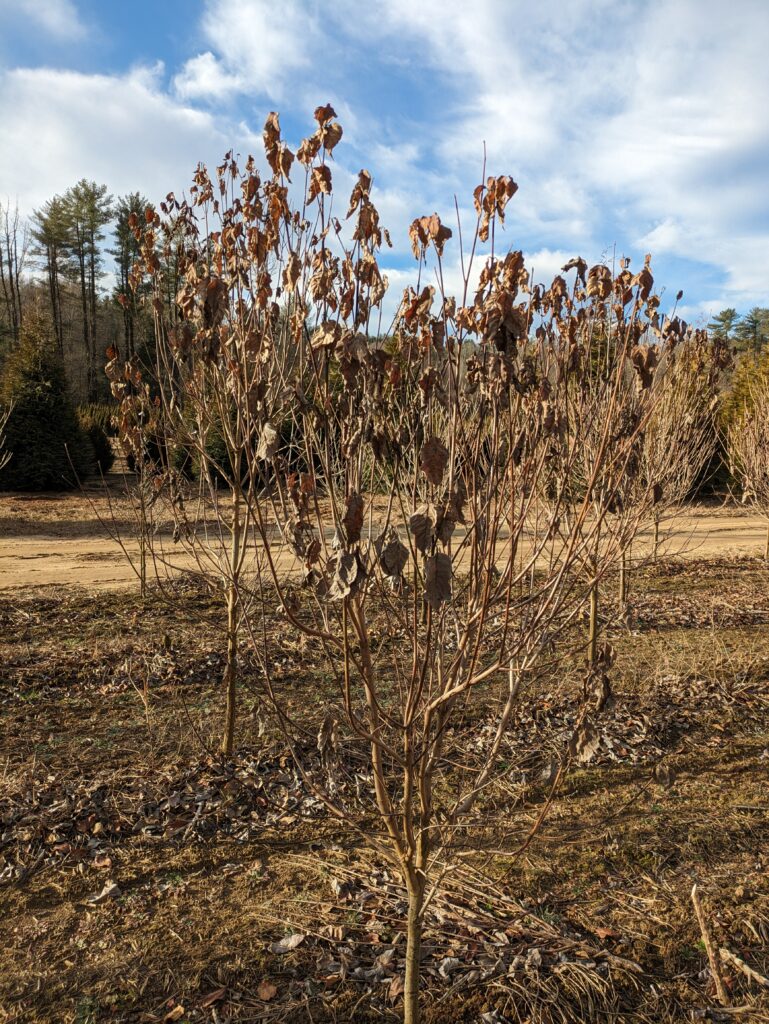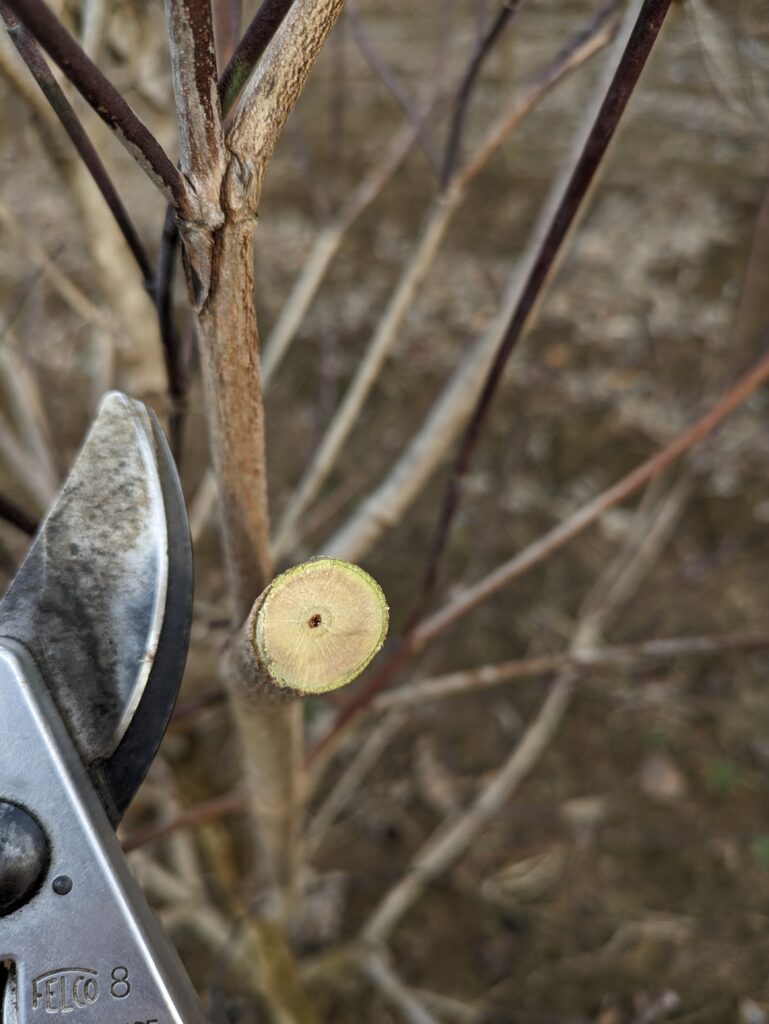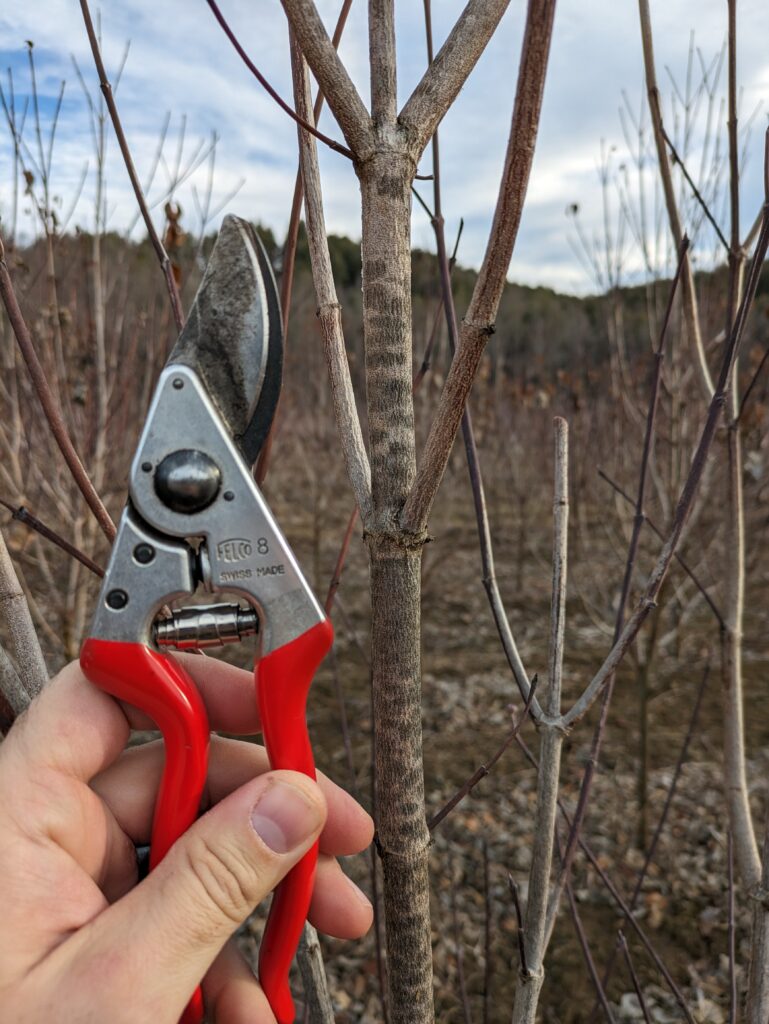Pest Alert: Phomopsis Dieback in Florida Dogwoods
go.ncsu.edu/readext?993548
en Español / em Português
El inglés es el idioma de control de esta página. En la medida en que haya algún conflicto entre la traducción al inglés y la traducción, el inglés prevalece.
Al hacer clic en el enlace de traducción se activa un servicio de traducción gratuito para convertir la página al español. Al igual que con cualquier traducción por Internet, la conversión no es sensible al contexto y puede que no traduzca el texto en su significado original. NC State Extension no garantiza la exactitud del texto traducido. Por favor, tenga en cuenta que algunas aplicaciones y/o servicios pueden no funcionar como se espera cuando se traducen.
Português
Inglês é o idioma de controle desta página. Na medida que haja algum conflito entre o texto original em Inglês e a tradução, o Inglês prevalece.
Ao clicar no link de tradução, um serviço gratuito de tradução será ativado para converter a página para o Português. Como em qualquer tradução pela internet, a conversão não é sensivel ao contexto e pode não ocorrer a tradução para o significado orginal. O serviço de Extensão da Carolina do Norte (NC State Extension) não garante a exatidão do texto traduzido. Por favor, observe que algumas funções ou serviços podem não funcionar como esperado após a tradução.
English
English is the controlling language of this page. To the extent there is any conflict between the English text and the translation, English controls.
Clicking on the translation link activates a free translation service to convert the page to Spanish. As with any Internet translation, the conversion is not context-sensitive and may not translate the text to its original meaning. NC State Extension does not guarantee the accuracy of the translated text. Please note that some applications and/or services may not function as expected when translated.
Collapse ▲Since October of 2023, I have had multiple reports of dieback issues occurring in (C. florida) varieties. I sent samples to PDIC in Raleigh and to Tennessee State in McMinnville and both labs have independently confirmed the presence of a type of stem canker called Phomopsis sp.
This is a type of fungal pathogen that some of you may be familiar with, as it is/was problematic on many types of conifer species. This is the first report I have of it showing up on Florida dogwoods, though the disease has many different hosts. Phomopsis sp. is highly opportunistic, meaning that stressed trees are most susceptible to infection; young trees in particular are highly susceptible because things like transplant shock, heat/water stress, etc. are more problematic in the first year or so of growth. Even though the disease itself is not necessarily fatal, total dieback of trees is possible. Older trees (3+ years) are able to withstand the disease a little better, but are still prone to total dieback if the issue is not addressed early on.
What to look for (with images below):
As I said, Florida dogwoods (all varieties) seem to be most affected right now, so inspect those trees first. Things to look for include:
- Dead leaves from the previous year are still attached to the branches; (Figure 1)
- Brownish and/or hollow stems, limbs, or main trunk (Figs 2 & 3)
- Cankers or lesions on the affected stems;
- Sunken or flattened areas on the main trunk that will have a type of ‘spotting’ or ‘checkerboard’ pattern
Non-chemical Treatment options
- Pruning can be a highly effective management strategy for this disease. If you are pruning out dead or dying limbs, it is essential that you maintain proper sanitation of your equipment. A 50% isopropyl alcohol solution sprayed or wiped onto pruners between each pruning cut will keep things clean.
- Cut branches until you see healthy green stems with no browning or hollow areas in the central part of the stem—sometimes this may mean cutting off entire branches. If the darkened areas appear in the main trunk, no treatment is possible.
- Because this is an opportunistic fungi that attacks stressed trees, finding the underlying cause of the stress is important.
Chemical treatment options
Fungicide options are sparse and provide only fair-to-good control so rotation between groups and regular monitoring of trees will be essential here:
- Mancozeb (Group M3): Protect T/O, Fore, Dithane, Pentathlon
- Thiophanate methyl (Group 1): 3336, T-Bird, T-methyl, Transom, etc.
- Azoxystrobin (Group 11)*: Heritage
- Trifloxystrobin (Group 11)*: Compass 0
*Tank mix group 11 fungicides with a Group 1 or M3 for increased efficacy and to prevent development of resistance.
Spraying at regular intervals and rotation of products is essential. Even though this disease is active during the growing season, young growth that has not yet hardened off is the most susceptible so spray programs for this disease should focus on that time period when growth has not yet hardened off. Continue to monitor trees for symptoms throughout the growing season and into the fall.
Read more about Phomopsis canker
Read more about Group 11 fungicides

Figure 1. Trees affected with Phomopsis will retain old leaves through the winter and spring months. Whole limbs and branches may be affected.

Figure 2. Once cut way, the central part of the stem or branch will appear brown or black and in some cases may be completely hollow.

Figure 3. Externally, branches or limbs may have a spotting pattern or have sunken or flattened areas of the bark.

Figure 4. This image was from the main trunk of a Florida dogwood. Once the disease reaches the main trunk, it almost certain that the entire plant will die and removal is the only option for treatment.




